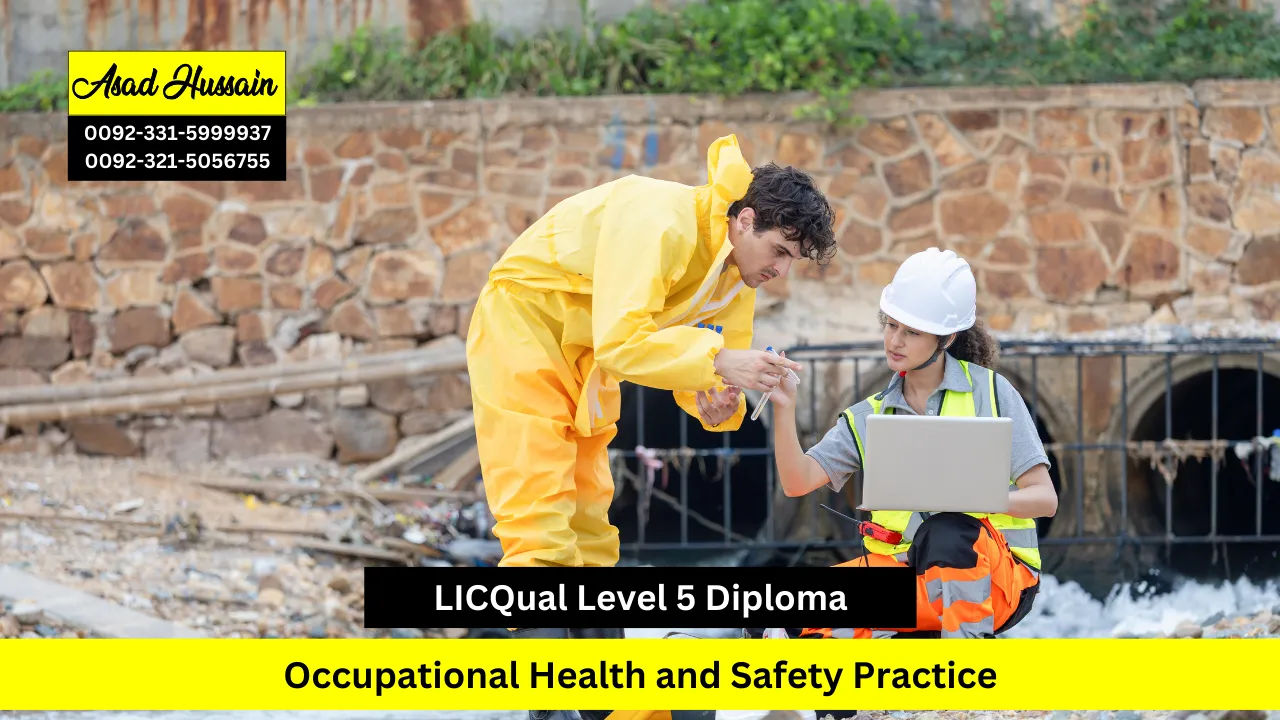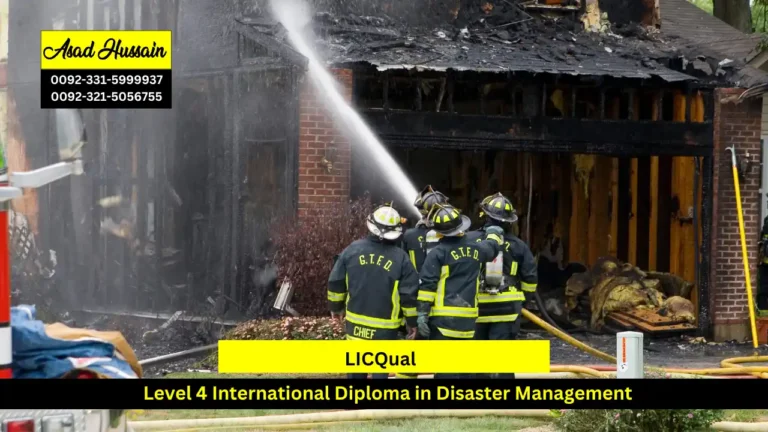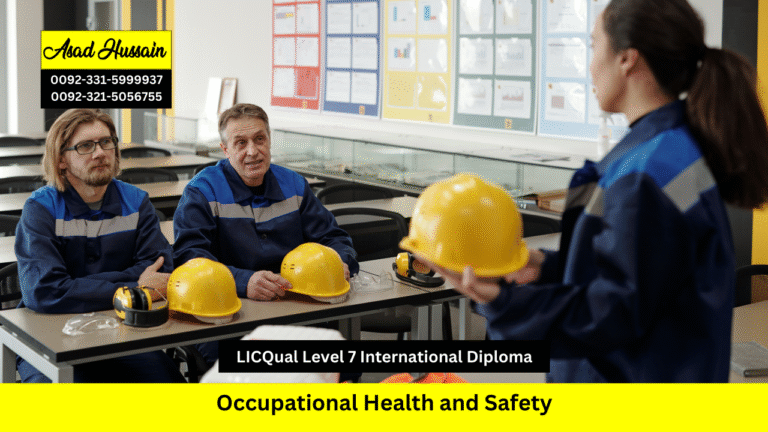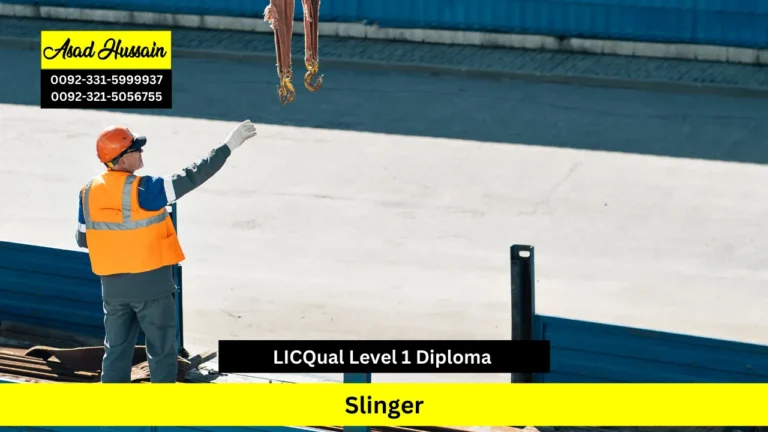The LICQual Level 5 Diploma in Occupational Health and Safety Practice is an advanced qualification designed for professionals aiming to take leadership roles in workplace safety management. In today’s complex and highly regulated industries, effective health and safety practices are essential to protect employees, minimize risks, and ensure compliance with national and international standards. LICQual Level 5 Diploma in Occupational Health and Safety Practice equips learners with the expertise required to oversee health and safety operations at a strategic level.
The purpose of LICQual Level 5 Diploma in Occupational Health and Safety Practice is to develop the knowledge, skills, and practical competencies necessary to manage comprehensive safety programs, implement risk control strategies, and lead organizational safety initiatives. Learners will gain insight into advanced topics such as health and safety legislation, risk management frameworks, safety culture development, and auditing practices.
Participants will also learn how to apply theoretical knowledge to real-world scenarios, enabling them to conduct audits, develop safety policies, manage incidents, and influence organizational safety culture effectively. This diploma prepares learners for senior roles such as health and safety managers, consultants, and advisors across a range of industries, including construction, manufacturing, oil and gas, logistics, and corporate sectors.
By completing the LICQual Level 5 Diploma in Occupational Health and Safety Practice, learners will enhance their professional credibility, leadership skills, and strategic decision-making abilities, empowering them to create safer, more compliant, and efficient workplace environments.
Program Highlights
Mandatory Units
- Health and Safety Legislation and Regulations
- Strategic Risk Management
- Developing Health and Safety Systems
- Leadership and Culture in Health and Safety
- Accident Investigation and Reporting
- Emergency Planning and Response
To ensure learners are fully prepared for the LICQual Level 5 Diploma in Occupational Health and Safety Practice, the following entry requirements are recommended. These requirements ensure participants have the foundational knowledge and skills necessary to succeed in this advanced program.
Age Requirements
- Learners must typically be 21 years or older to enrol.
- Mature learners with relevant professional experience may also be considered.
Educational Requirements
- A Level 4 qualification in Occupational Health and Safety or an equivalent subject is generally required.
- Learners with strong backgrounds in management, engineering, or safety-related fields may also be eligible.
Professional Experience
- Prior work experience in health and safety, supervision, or risk management is highly recommended.
- Professionals with leadership responsibilities in workplace safety will benefit most from this program.
English Language Proficiency
- Competency in English is essential for understanding technical content, assessments, and reporting.
- Non-native English speakers may be required to demonstrate proficiency through recognized tests or prior qualifications.
These entry requirements ensure that learners are well-prepared to engage with advanced occupational health and safety content, gain practical skills, and apply their knowledge to lead organizational safety initiatives effectively. By meeting these standards, participants maximize their ability to succeed in the program and advance their careers in workplace safety management.
The LICQual Level 5 Diploma in Occupational Health and Safety Practice is designed to develop strategic knowledge, leadership skills, and practical competencies for senior health and safety roles. Learners completing this course will be able to manage complex health and safety programs, ensure regulatory compliance, and lead initiatives to foster a safe organizational culture. Each unit equips learners with measurable skills that are directly applicable to professional practice.
Health and Safety Legislation and Regulations
- Interpret and apply national and international health and safety legislation effectively.
- Ensure organizational policies comply with current legal requirements and industry standards.
- Evaluate the impact of regulatory changes on workplace safety practices.
- Develop guidance and procedures to maintain ongoing compliance across operations.
Strategic Risk Management
- Conduct advanced risk assessments and implement preventive strategies.
- Analyze potential hazards at an organizational level and prioritize control measures.
- Apply risk management frameworks to minimize operational and reputational risks.
- Monitor and review risk management systems for continuous improvement.
Developing Health and Safety Systems
- Design and implement comprehensive occupational health and safety management systems.
- Integrate safety policies into organizational processes to improve efficiency and compliance.
- Evaluate system effectiveness using measurable performance indicators.
- Recommend enhancements to ensure alignment with international standards such as ISO 45001.
Leadership and Culture in Health and Safety
- Promote a proactive health and safety culture within organizations.
- Lead teams and stakeholders to adopt best practices in workplace safety.
- Develop training and awareness programs to enhance employee engagement.
- Influence organizational decision-making to prioritize safety in strategic planning.
Accident Investigation and Reporting
- Plan and conduct structured investigations into workplace incidents.
- Identify root causes and contributing factors using recognized investigative techniques.
- Prepare professional, accurate reports for regulatory and organizational purposes.
- Recommend corrective and preventive measures to reduce future incidents.
Emergency Planning and Response
- Develop effective emergency response strategies and contingency plans.
- Coordinate organizational resources to manage emergencies efficiently.
- Conduct simulations and drills to test readiness and response effectiveness.
- Evaluate emergency plans to ensure continuous improvement and compliance.
Upon completing this diploma, learners will be equipped with advanced knowledge, leadership capabilities, and practical skills to implement effective health and safety strategies at an organizational level. Graduates will be prepared to take on senior roles, ensuring safe, compliant, and sustainable workplaces.
The LICQual Level 5 Diploma in Occupational Health and Safety Practice is tailored for professionals aiming to assume leadership roles in workplace safety. The course is ideal for those seeking to enhance strategic decision-making, regulatory compliance, and organizational safety culture.
Educational Instructors and Trainers
- Trainers and educators seeking to integrate advanced occupational health and safety practices into teaching programs.
- Professionals aiming to develop training modules and courses for workplace safety education.
Environmental Advocates and Activists
- Individuals promoting sustainable and safe working environments.
- Advocates who wish to implement practical health and safety solutions alongside environmental initiatives.
Students and Recent Graduates
- Graduates with a background in safety, engineering, or management seeking senior-level expertise.
- Learners looking to enter advanced health and safety roles with measurable competencies.
Career Changers
- Professionals from unrelated industries seeking to transition into strategic health and safety positions.
- Individuals aiming for higher responsibility and leadership in occupational health and safety management.
Policy Makers and Regulators
- Professionals involved in developing or enforcing workplace safety regulations.
- Government or organizational representatives requiring a thorough understanding of compliance frameworks and strategic safety management.
This diploma is suitable for motivated individuals committed to advancing their careers in occupational health and safety. By completing the program, learners gain the knowledge, leadership skills, and professional recognition necessary to influence workplace safety at a strategic level, creating safer and more compliant organizational environments.







